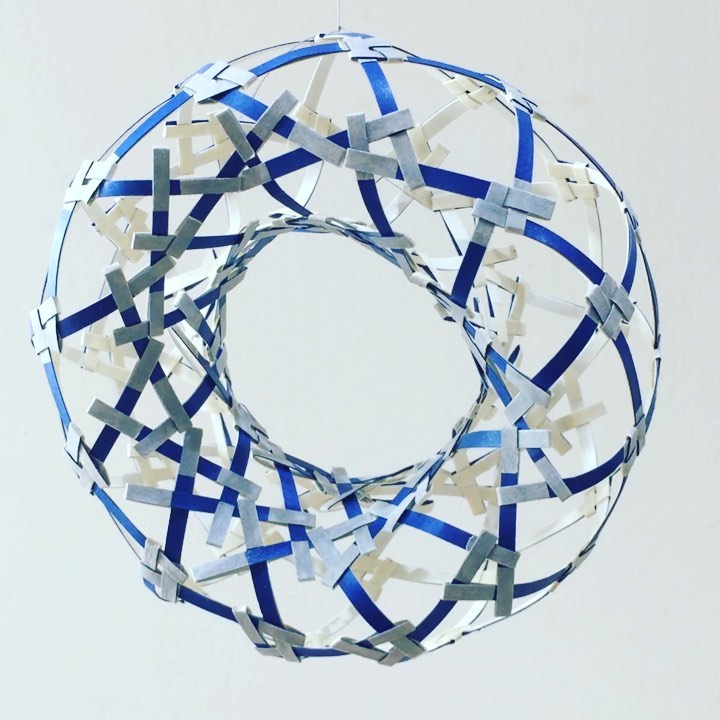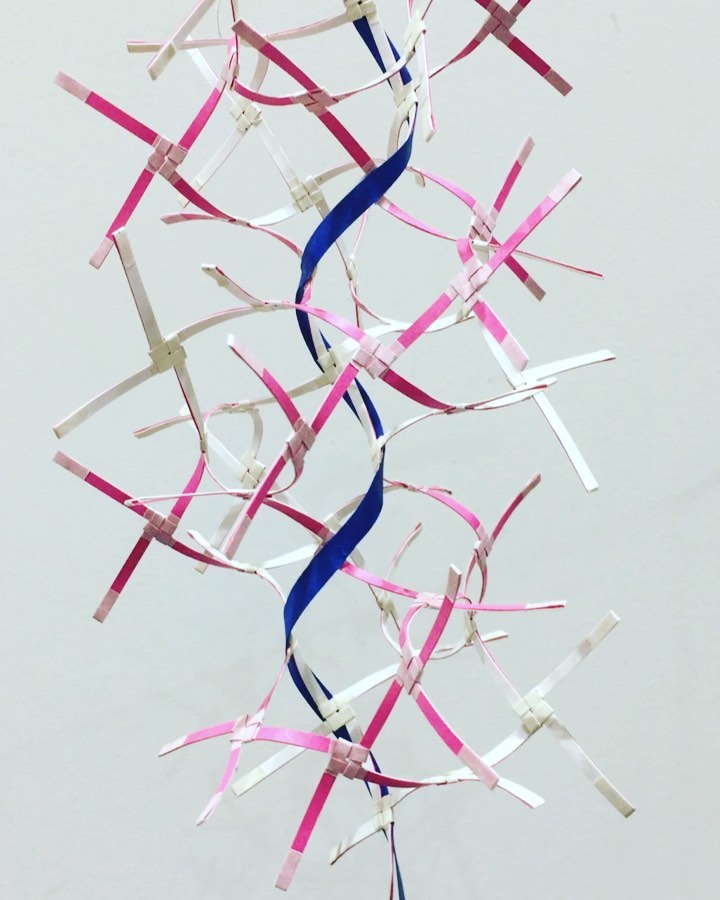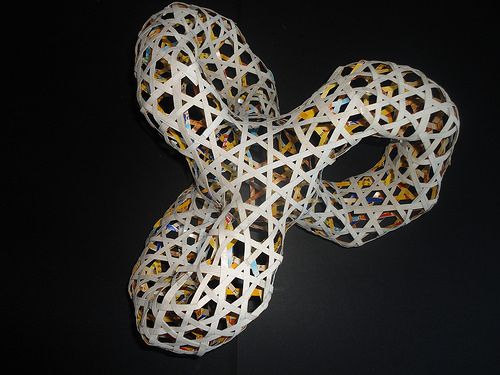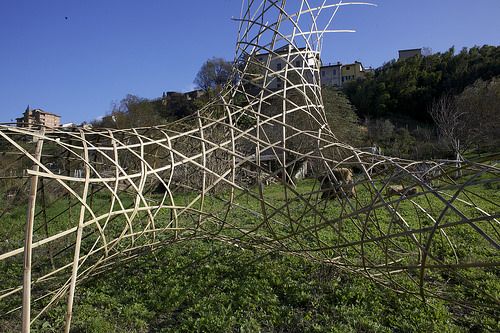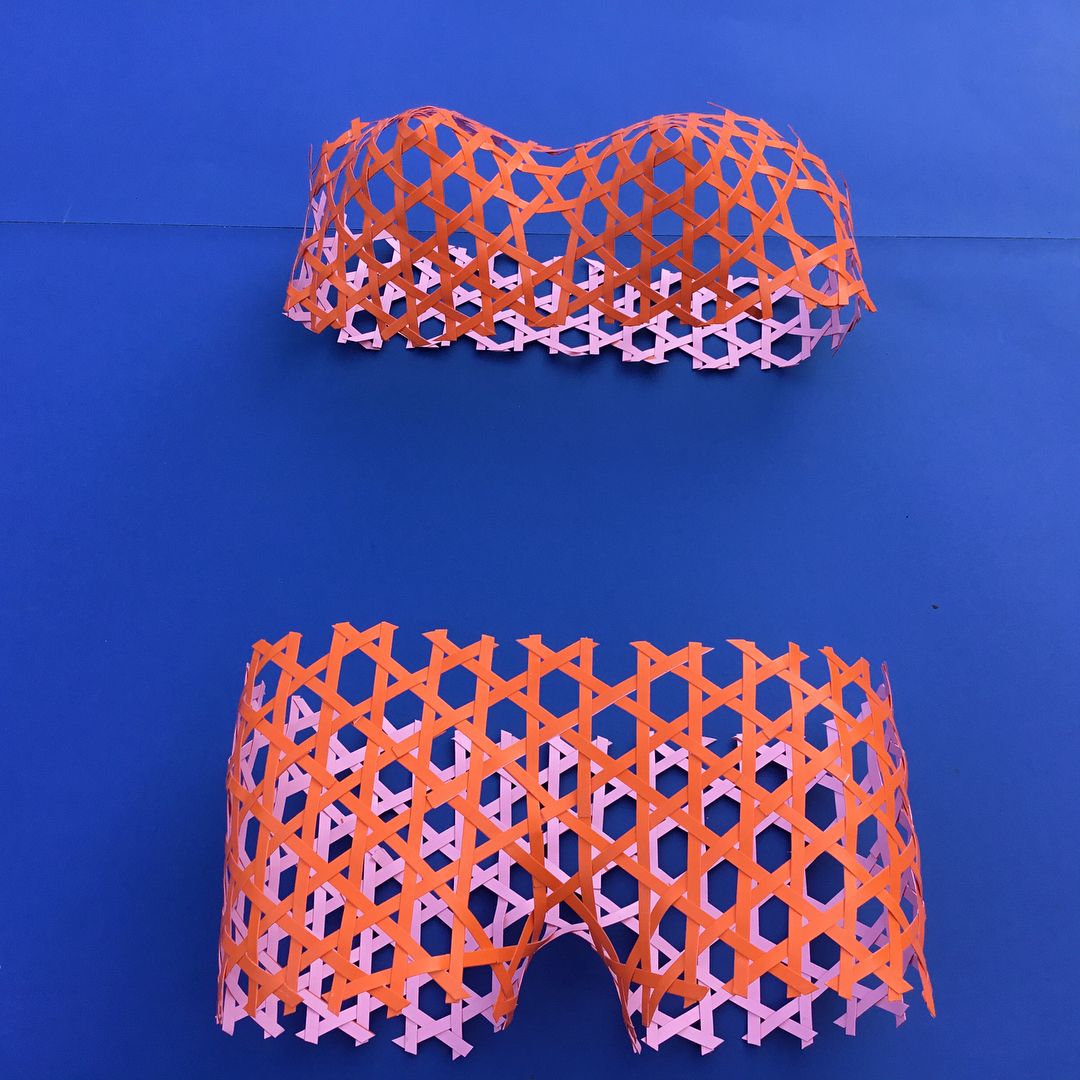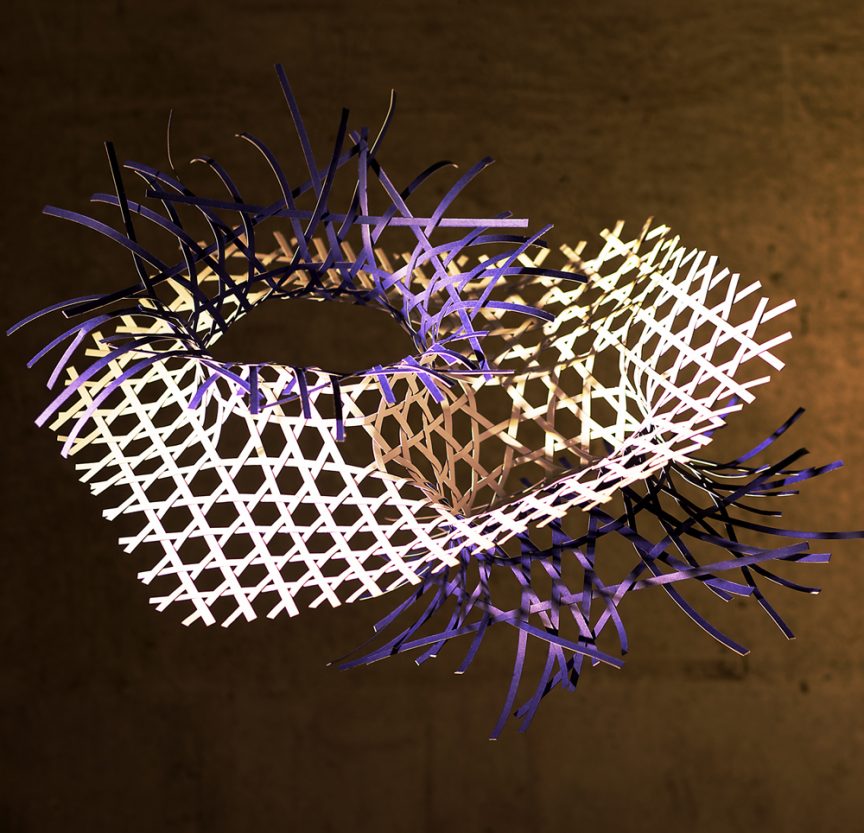Embracing “the logic of the weave.”
Torus from planar net. Wove a cylinder from short paper loops then opened ends to connect on outer surface. Woven nodes slide to accommodate excess length.
tbh it’s smoother than I expected. Skewing the mesh seems to help. #torus #geometry pic.twitter.com/s0rUyWH7Lm— alisonmartin (@alisonmartin57) January 28, 2021
Ms. Martin studied graphic design in the 1970s in London at what is now Central Saint Martins, and began weaving a decade later, when life took a detour. In 1985, her husband, Mauro Cuomo, an Italian computer scientist, left his job at Apple, and they moved back to Italy, eventually settling in the remote Tuscan hill-town of Fivizzano.
“That’s where one thing led to another,” Ms. Martin said. She focused on her family of five, and her “one-woman mission impossible” to make them self-sufficient on their small holding. The property had come cheap, thanks to a large stand of invasive bamboo.
“We had to chop the bamboo down every year to stop it from getting into the olives and vines and other things I was trying to grow,” she said. Eventually, she realized that the best way to deal with bamboo was to treat it as a resource, an opportunity.
She made practical garden structures, to support climbing plants — peas and borlotti beans, cucumbers, pumpkins and melons. She built chicken coops, raised beds, covers for hay and wood piles as well as shade structures. But she became frustrated with the bamboo construction techniques she found online.
It became clear that the weaving could be doing more of the work — “if I pushed it a bit,” she said. She made models with strips of paper, grew curious about the difference between biaxial and triaxial weaves (with two or three straight strips) and studied how non-Euclidean geometry could be applied to weaving.
Alison Martin, British
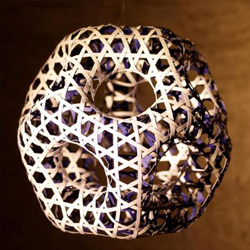
PROFILE
Alison Grace Martin, British artist and weaver. Typically weaves small-scale paper objects or medium-size bamboo structures. Lately, her work is attracting the attention of architects and engineers, and she has begun to pursue various collaborations.

